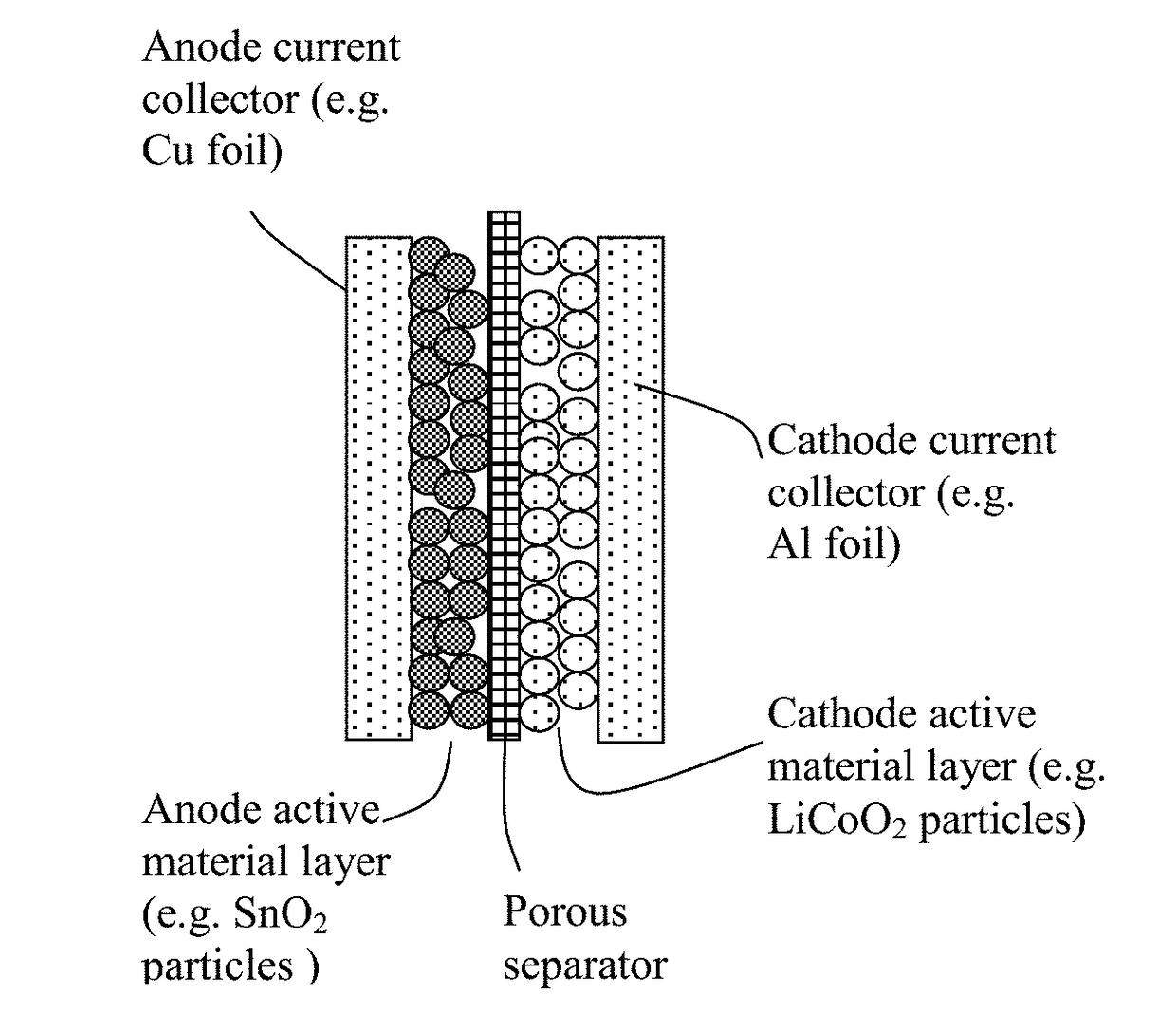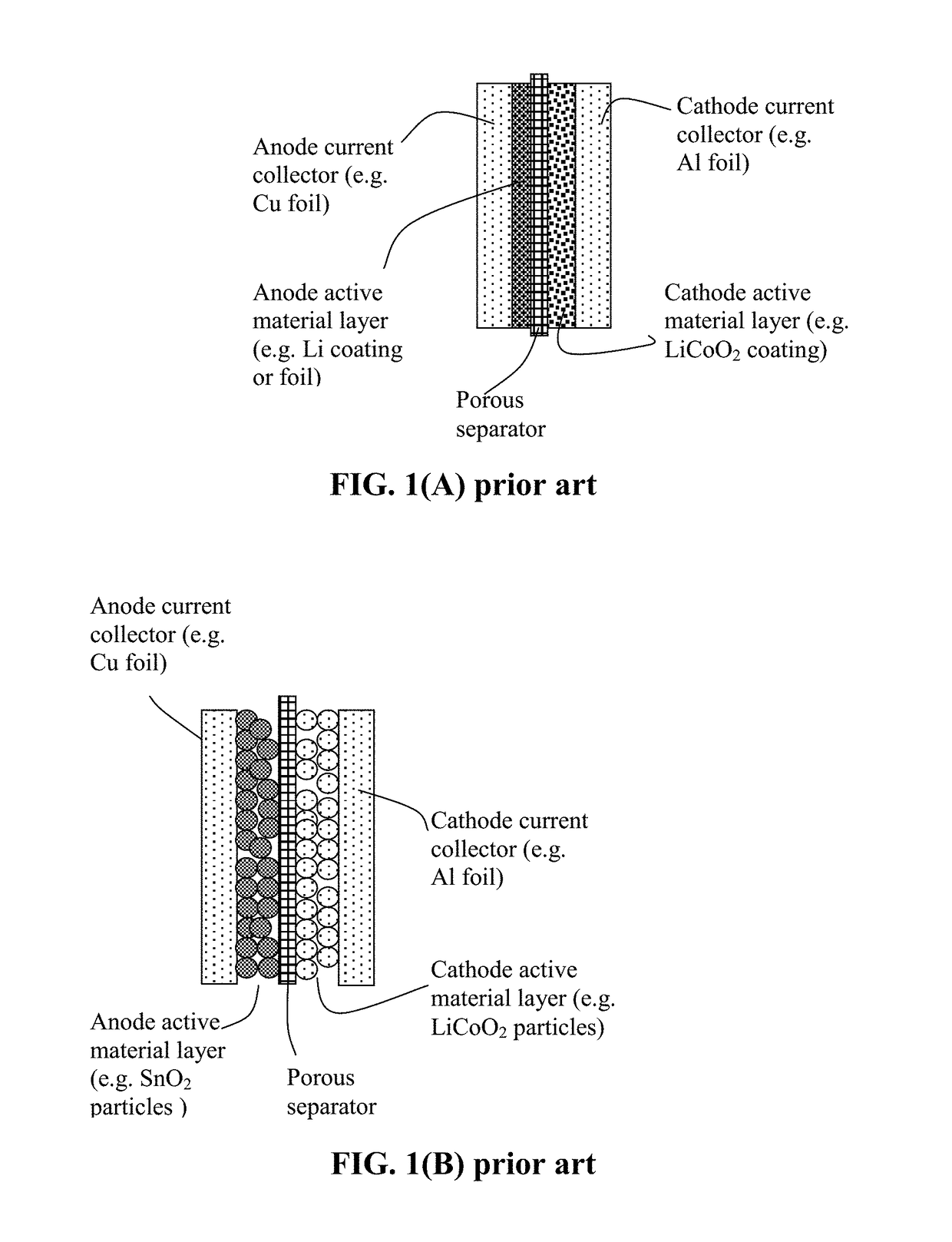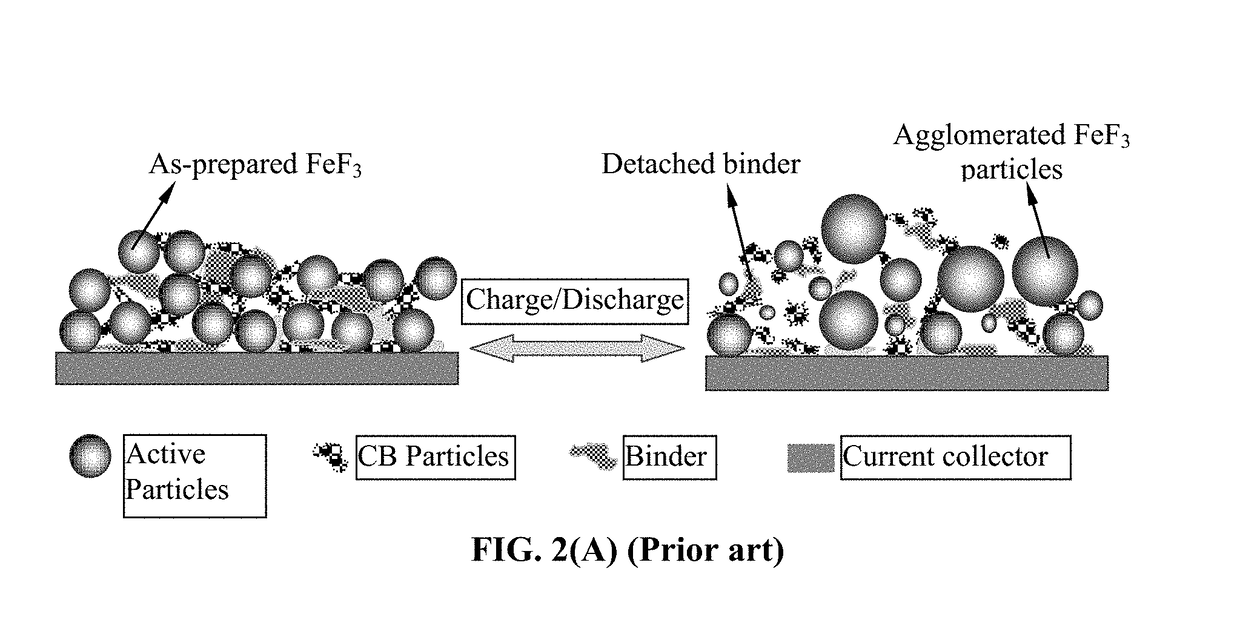Encapsulated Cathode Active Material Particles, Lithium Secondary Batteries Containing Same, and Method of Manufacturing
a cathode active material and active material technology, applied in the field of rechargeable lithium batteries, can solve the problems of inability to deliver high pulse power, limiting the choice of available cathode materials, and the specific capacity of commonly used cathode active materials
- Summary
- Abstract
- Description
- Claims
- Application Information
AI Technical Summary
Benefits of technology
Problems solved by technology
Method used
Image
Examples
example 1
Cathode Active Material Layers Containing High-Elasticity UHMW Polymer-Encapsulated V2O5 Particles
[0110]Cathode active material layers were prepared from V2O5 particles and graphene-embraced V2O5 particles, respectively. V2O5 particles were commercially available. Graphene-embraced V2O5 particles were prepared in-house. In a typical experiment, vanadium pentoxide gels were obtained by mixing V2O5 in a LiCl aqueous solution. The Li+ exchanged gels obtained by interaction with LiCl solution (the Li:V molar ratio was kept as 1:1) was mixed with a GO suspension and then placed in a Teflon-lined stainless steel 35 ml autoclave, sealed, and heated up to 180° C. for 12 h. After such a hydrothermal treatment, the green solids were collected, thoroughly washed, ultrasonicated for 2 minutes, and dried at 70° C. for 12 h followed by mixing with another 0.1% GO in water, ultrasonicating to break down nano-belt sizes, and then spray-drying at 200° C. to obtain graphene-embraced V2O5 composite pa...
example 2
High-Elasticity Polymer Binder-Bonded Lithium Iron Phosphate (LFP) Particles
[0120]The high-elasticity polymer for encapsulation of LFP particles was based on ultra-high molecular weight polyacrylonitrile (UHMW PAN). UHMW PAN (0.3 g) was dissolved in 5 ml of dimethylformamide (DMF) to form a solution. The LFP particles were then dispersed in the solution to form a slurry. The slurries were then separately subjected to a micro-encapsulation procedure to produce anode active material particles having entire exterior surfaces being coated with an embracing layer of the polymers.
[0121]Polymer films for elasticity testing were cast from the prepared solutions on a glass support, followed by solvent evaporation at 70° C. under a fume hood. To remove the traces of DMF, the films were thoroughly dried in a vacuum (<1 Torr) at 70° C. for 48 h. The polymer films were soaked in propylene carbonate (PC) to form PC-plasticized UHMW PAN films. Tensile testing was also conducted on these films and ...
example 3
Metal Fluoride Nano Particles Encapsulated by an UHMW PPO
[0123]For encapsulation of FeF3 nano particles, an UHMW PPO polymer was implemented as an embracing polymer shell by using a procedure similar to that described in Example 1. Commercially available powders of CoF3, MnF3, FeF3, VF3, VOF3, TiF3, and BiF3 were subjected to high-intensity ball-milling to reduce the particle size down to approximately 0.5-2.3 μm. Each type of these metal fluoride particles, along with graphene sheets (as a conductive additive), was then added into a UHMW PPO-solvent liquid suspension to form a multiple-component slurry. The slurry was then spray-dried to form isolated polymer embraced particles.
[0124]Shown in FIG. 5 are the discharge capacity curves of two coin cells having two different types of cathode active materials: (1) high-elasticity UHMW PPO polymer-encapsulated metal fluoride particles and (2) non-encapsulated metal fluorides. These results have clearly demonstrated that the high-elastici...
PUM
| Property | Measurement | Unit |
|---|---|---|
| thickness | aaaaa | aaaaa |
| lithium ion conductivity | aaaaa | aaaaa |
| tensile strain | aaaaa | aaaaa |
Abstract
Description
Claims
Application Information
 Login to View More
Login to View More - R&D
- Intellectual Property
- Life Sciences
- Materials
- Tech Scout
- Unparalleled Data Quality
- Higher Quality Content
- 60% Fewer Hallucinations
Browse by: Latest US Patents, China's latest patents, Technical Efficacy Thesaurus, Application Domain, Technology Topic, Popular Technical Reports.
© 2025 PatSnap. All rights reserved.Legal|Privacy policy|Modern Slavery Act Transparency Statement|Sitemap|About US| Contact US: help@patsnap.com



